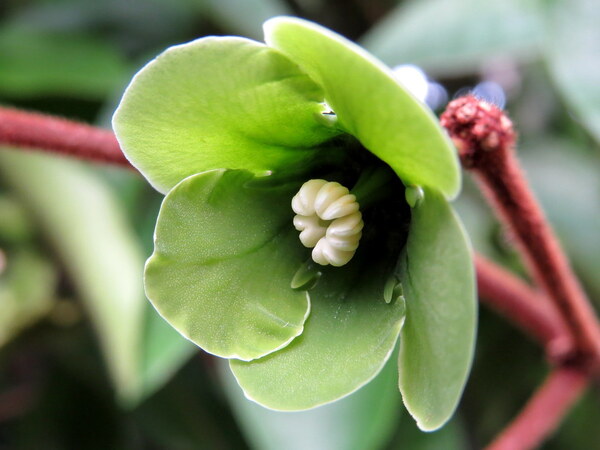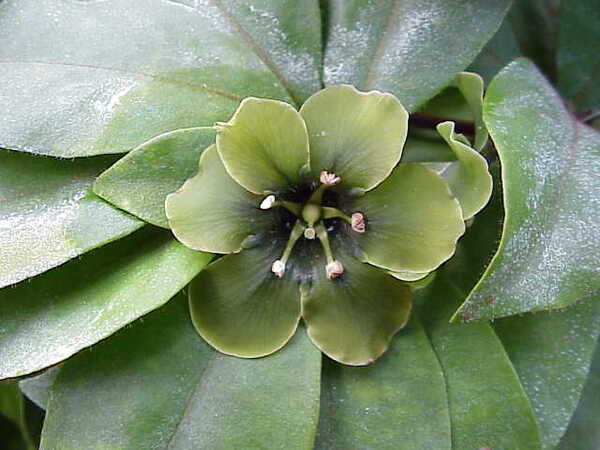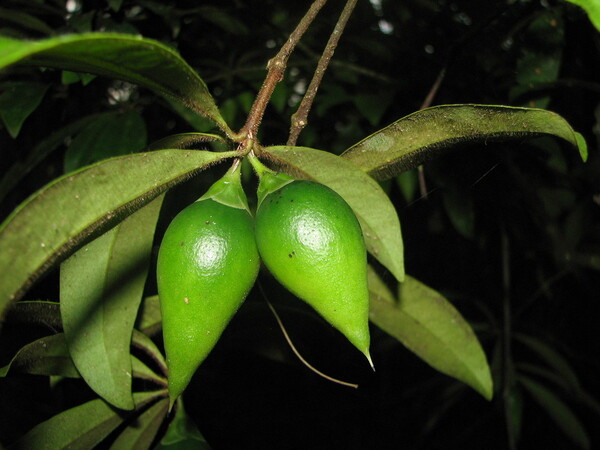Deherainia smaragdina, a shrub in the family Orobanchaceae, is a fascinating and somewhat mysterious plant native to Central America. It is distributed in countries such as Honduras, Guatemala, Belize, and Mexico. Known for its unique green flowers and distinctive, unpleasant odor, this plant has earned the Spanish and English common names flor de la muerte (flower of death) and flower of death. These names stem from its historical and cultural association with treating people who are terminally ill and "fear death". Despite its somewhat eerie reputation, Deherainia smaragdina plays an important role in local healing traditions and offers a compelling subject for botanical and cultural studies.
This article provides an in-depth exploration of Deherainia smaragdina, its botanical characteristics, its significance in local medicine, and the ecological role it plays in its native habitat.
Kingdom: Plantae
Phylum: Angiosperms
Class: Eudicots
Order: Lamiales
Family: Orobanchaceae
Genus: Deherainia
Species: Deherainia smaragdina
Deherainia smaragdina is a relatively rare shrub that belongs to the Orobanchaceae family, which includes a variety of parasitic plants. It is part of the genus Deherainia, which consists of a few species native to Central America. Despite being a member of the Orobanchaceae family, which is generally known for its parasitic members, Deherainia smaragdina is not a parasitic plant, but rather an independent shrub.

This shrub is relatively small and is characterized by its distinctive green flowers. Unlike most flowering plants, the blooms of Deherainia smaragdina are not the typical bright and colorful hues associated with flowers; instead, they are a pale green, contributing to its enigmatic nature. The flowers grow in clusters and have a somewhat tubular shape, making them stand out among other flora in the region.
The most striking feature of Deherainia smaragdina, however, is its pungent odor. The plant emits an unpleasant scent, which is often described as foul or putrid. This odor has earned it a reputation that ties it closely to death, giving rise to its common name, flower of death. This smell is part of the plant's defense mechanism, designed to deter herbivores from feeding on it.
Deherainia smaragdina is found in tropical and subtropical climates, thriving in the rainforests and jungle regions of Honduras, Guatemala, Belize, and Mexico. It is typically found in lowland areas, where the climate is hot and humid. The plant prefers well-drained soil and often grows under the canopy of larger trees, although it can occasionally be seen in open areas as well.
Because of its distinct characteristics, Deherainia smaragdina is not commonly found outside of its native habitat, though it has been cultivated in certain areas for its medicinal properties.

The name flor de la muerte (flower of death) is deeply rooted in the cultural traditions of Central America. It is believed that Deherainia smaragdina has medicinal properties that can be used to help those who are facing terminal illnesses, particularly those who are "afraid of death." In local healing traditions, the plant is often used in rituals or remedies designed to provide comfort to dying individuals, offering them peace and helping them come to terms with their mortality.
The plant's association with death and the afterlife is symbolic, and it is considered by some to have a spiritual connection to the realm of the deceased. In indigenous medicine, it has been used to help alleviate the fear and anxiety that many individuals experience when they approach death, offering them a sense of calm and acceptance.
Deherainia smaragdina has been used in traditional medicine in various ways, particularly by the indigenous peoples of Central America. The plant is believed to have therapeutic effects for a range of ailments, from general physical discomfort to more serious, life-threatening conditions. It is most commonly used in preparations that are ingested as teas, extracts, or poultices.
Sedative Properties: The plant is thought to have sedative effects, helping to calm the nervous system and reduce anxiety, which is particularly beneficial for individuals experiencing emotional distress related to terminal illnesses.
Pain Relief: Some traditional uses involve applying the plant to areas of the body suffering from pain, such as joints or muscles, to provide temporary relief.
Spiritual Healing: Beyond its physical properties, Deherainia smaragdina is also used in spiritual healing practices, where it is believed to help the dying person transition peacefully into the afterlife.
Although there is limited scientific research on Deherainia smaragdina, the interest in its medicinal properties continues to grow. Modern studies have begun to explore the potential of plants like Deherainia smaragdina in supporting end-of-life care, particularly in managing symptoms of anxiety, depression, and pain in terminally ill patients.
Researchers are also investigating the chemical compounds in the plant that might contribute to its sedative and pain-relieving effects. The unpleasant odor, while a hallmark of its identity, may also play a role in deterring certain pests, potentially giving the plant a unique ecological function in its native environment.

Deherainia smaragdina, or the flower of death, is a remarkable plant that straddles the realms of botany, culture, and medicine. Known for its green flowers and foul odor, this shrub holds significant cultural and spiritual meaning in Central America, where it is used to help those who are terminally ill confront their mortality. Despite its dark associations, the plant has been a source of comfort for generations and continues to be a part of local medicinal practices. As more research is conducted into its properties, Deherainia smaragdina may reveal further applications in modern medicine, particularly in palliative care and end-of-life support.
In a world where the line between science and culture often intersects, Deherainia smaragdina reminds us of the deep connections between nature, healing, and the human experience.
animal tags: Orobanchaceae
We created this article in conjunction with AI technology, then made sure it was fact-checked and edited by a Animals Top editor.